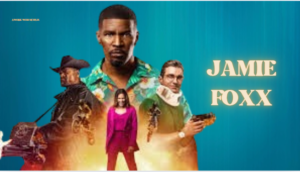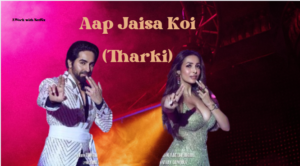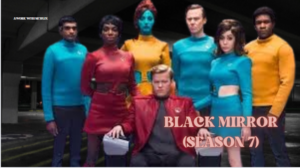
In the realm of animated television, few shows have dared to explore the awkward, uncomfortable, and often messy stages of adolescence quite like Big Mouth. A creation of Nick Kroll, Andrew Goldberg, Mark Levin, and Jennifer Flackett, Big Mouth has set itself apart by offering an unflinching look at the complexity of growing up. Instead of presenting a sanitized or idealized version of puberty, the show dives into the raw, unfiltered aspects of adolescence. With its unique blend of humor, emotional depth, and boundary-pushing storytelling, Big Mouth has quickly become one of the most talked-about animated series of the decade.
At its core, Big Mouth is a show about puberty, a period of immense physical, emotional, and psychological vchange. The series follows a group of young teenagers as they navigate the tumultuous transition from childhood to adolescence, exploring the confusing and often overwhelming aspects of sexual development, body image, mental health, and self-discovery. Through its exaggerated storytelling and vivid characters, the show highlights how the journey of growing up is full of awkward, messy, and sometimes funny moments. But more importantly, Big Mouth does so in a way that feels authentic and real, tapping into the universal experiences of teenagers everywhere.
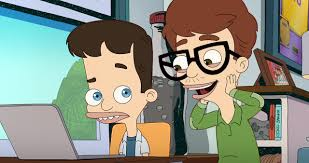
Photo Credit: Netflix
A Raw and Honest Portrayal of Puberty
What sets Big Mouth apart from other coming-of-age shows is its commitment to presenting the unfiltered truth about puberty. The series does not shy away from the physical, emotional, and hormonal chaos that defines adolescence. From the very first episode, Big Mouth introduces viewers to its unique cast of characters, many of whom are personifications of the internal struggles that adolescents face. The hormone monsters, for example, are comedic yet deeply symbolic figures that represent the uncontrollable urges and emotional turmoil that come with puberty. These larger-than-life creatures push the characters to explore new aspects of their identities—often in outrageous and exaggerated ways.
The hormone monsters—voiced by Nick Kroll and John Mulaney—become both guides and provocateurs, encouraging the teenagers to embrace their newfound desires, whether they are sexual, emotional, or social. They are not only a comedic device but also a reflection of the inner battles young people face as they navigate the complexity of puberty. Whether it’s dealing with crushes, sexual curiosity, or the overwhelming feelings of anxiety and self-doubt, the hormone monsters serve as a constant reminder of the internal forces driving the characters’ actions. But rather than presenting puberty as something to fear or avoid, Big Mouth leans into its absurdity, showing how both funny and painful this time of life can be.

Photo Credit: Netflix
The show also touches on other important aspects of adolescence, such as friendship, family dynamics, and personal identity. The characters’ relationships with their friends and family members are portrayed with a sense of realism and depth, reflecting the ways in which adolescence is often shaped by the people around us. The series does not ignore the impact of family life on the emotional and psychological well-being of young people, nor does it gloss over the pressure to fit in with peers. Instead, it presents these elements in a way that feels grounded in the reality of teenage life, where friendship and family can be both sources of comfort and points of conflict.
The Power of Humor in Addressing Tough Topics
One of the defining features of Big Mouth is its ability to balance humor with serious themes. The show uses its comedic sensibility to explore sensitive subjects like sex, mental health, body image, and identity. The humor often comes from the exaggerated and absurd situations the characters find themselves in, such as the hormone monsters’ wild antics or the chaotic, over-the-top experiences of puberty. But this humor also serves a deeper purpose: it allows the show to address difficult topics in a way that is accessible and engaging for viewers. The use of humor in Big Mouth makes it possible for the show to explore taboo subjects that are often left unspoken in other forms of media.
For example, the character of Andrew, voiced by Nick Kroll, is depicted as a typical teenage boy dealing with an overactive sex drive.His hormone monster, Maurice, encourages him to indulge in his sexual impulses, leading to comically exaggerated situations that highlight the confusion and discomfort that many young people experience during puberty. These comedic moments provide a way for the audience to laugh at the absurdity of adolescence, while also acknowledging the underlying struggles and insecurities that come with this stage of life. Similarly, the show tackles topics like masturbation, crushes, and sexual identity, using humor to navigate the often awkward or embarrassing aspects of these experiences.
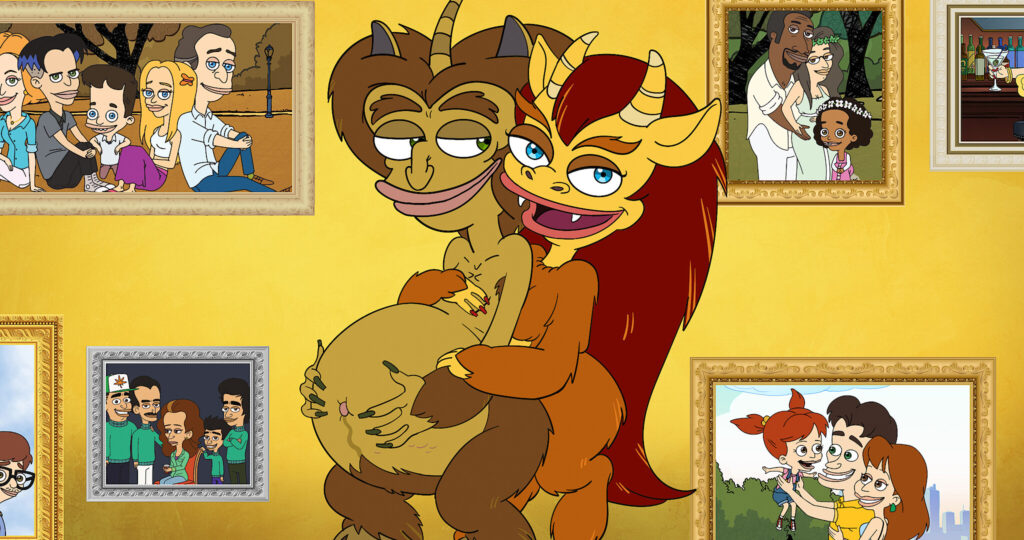
Photo Credit: Netflix
By doing so, Big Mouth destigmatizes these issues, making them less taboo and more relatable. The humor allows the series to create a space for open dialogue about topics that are usually considered private or uncomfortable, providing a refreshing and much-needed perspective on growing up. At the same time, Big Mouth does not shy away from the emotional depth of adolescence. While the show is undeniably funny, it also takes moments to delve into the more serious aspects of growing up.
Characters like Jessi and Andrew are portrayed as struggling with feelings of loneliness, anxiety, and depression—issues that many young people face but are often overlooked in media portrayals of adolescence. The show’s willingness to address mental health challenges head-on adds a layer of emotional complexity to the series, ensuring that it resonates with viewers on a deeper level.
Diversity and Representation in Big Mouth
One of the most notable aspects of Big Mouth is its commitment to diversity and representation. The show does not just feature a homogenous group of characters; instead, it portrays a wide range of experiences that reflect the diversity of real-life adolescence. Characters from different racial, ethnic, and cultural backgrounds are given meaningful storylines, allowing the show to address the unique challenges that come with growing up in a world that is not always kind to those who are different.

Photo Credit: Netflix
A key example of this is the character of Missy, a Black girl who is initially portrayed as feeling like an outsider among her friends. Over the course of the show, Missy’s journey becomes one of self-discovery and empowerment, as she grapples with both her identity as a young Black woman and the challenges of puberty. Missy’s character arc is a powerful exploration of how race and identity intersect with the experience of growing up, and it highlights the complexities of navigating adolescence as a person of color. Additionally, the show does not shy away from depicting LGBTQ+ experiences.
Characters like Natalie, who struggles with her bisexual identity, offer a nuanced and realistic portrayal of what it’s like to explore one’s sexuality during adolescence. By showing the emotional challenges and social pressures that come with being LGBTQ+ in a world that may not always be accepting, Big Mouth provides important representation for young people who may be going through similar experiences.
The Emotional Impact of Adolescence
While Big Mouth is filled with outrageous humor and exaggerated scenarios, it also underscores the emotional depth of adolescence. Puberty is not just about physical changes; it is also about navigating complex emotions, forming relationships, and discovering one’s identity. The series captures the vulnerability and confusion that comes with being a teenager, often portraying characters as feeling lost or overwhelmed by their emotions. For example, Jessi’s storyline in later seasons explores her struggles with depression and mental health.
Through her journey, Big Mouth emphasizes the importance of seeking help, finding support systems, and acknowledging the challenges of mental well-being. Jessi’s experience resonates deeply with viewers, particularly those who may have faced similar struggles during their own adolescence. By portraying these emotions in such a raw and real way, Big Mouth offers a valuable opportunity for young people to see their feelings reflected and validated on screen.

Photo Credit: Netflix
Conclusion: A Bold and Essential Exploration of Adolescence
Big Mouth has carved out a unique and vital space in the world of animated television, offering an unfiltered, unflinching look at the complexities of growing up. Through its humor, diversity, and emotional depth, the series has redefined the portrayal of adolescence, breaking down barriers and tackling difficult subjects that are often glossed over or ignored in other forms of media. Whether it’s discussing sex, mental health, or identity, Big Mouth uses humor to open up conversations that are both uncomfortable and essential.
What makes Big Mouth so groundbreaking is its willingness to be real about puberty. It does not sugarcoat the experience of growing up, and in doing so, it provides a much-needed platform for young people to understand and discuss the challenges they face. By balancing humor with sincerity, Big Mouth encourages viewers to laugh at the absurdity of adolescence, while also recognizing the deep emotional complexity that defines this pivotal time in life.
In the end, Big Mouth serves as a powerful reminder that growing up is messy, confusing, and often difficult—but it is also an exciting journey of self-discovery and change. The show’s unfiltered confessions of adolescence provide a bold, important, and ultimately affirming look at what it means to navigate the chaotic world of puberty in modern times. Through its honest and humorous lens, Big Mouth has become an essential voice in the conversation about growing up in the 21st century.

